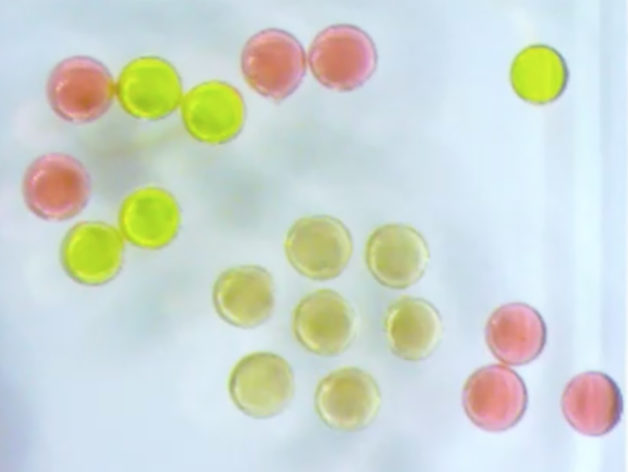
Inventors of centuries past and scientists of today have found ingenious ways to make our lives better with magnets – from the magnetic needle on a compass to magnetic data storage devices and even MRI body scan machines.
All of these technologies rely on magnets made from solid materials. But what if you could make a magnetic device out of liquids? Using a modified 3D printer, a team of Foundry users and staff have done just that. Their findings, to be published July 19 in the journal Science, could lead to a revolutionary class of printable liquid devices for a variety of applications – from artificial cells that deliver targeted cancer therapies to flexible liquid robots that can change their shape to adapt to their surroundings.
“We’ve made a new material that is both liquid and magnetic. No one has ever observed this before,” said Tom Russell, a visiting faculty scientist at Berkeley Lab and professor of polymer science and engineering at the University of Massachusetts, Amherst, who led the study. “This opens the door to a new area of science in magnetic soft matter.”
For the past seven years, Russell, who leads a program called Adaptive Interfacial Assemblies Towards Structuring Liquids in Berkeley Lab’s Materials Sciences Division (MSD) and also led the current study, has focused on developing a new class of materials – 3D-printable all-liquid structures.
Russell and Xubo Liu, the study’s lead author, came up with the idea of forming liquid structures from ferrofluids, which are solutions of iron-oxide particles that become strongly magnetic in the presence of another magnet. They used a 3D-printing technique they had previously developed to print 1 millimeter droplets from a ferrofluid solution containing iron-oxide nanoparticles just 20 nanometers in diameter (the average size of an antibody protein).
Using surface chemistry and sophisticated atomic force microscopy techniques, Foundry staff scientists Paul Ashby and Brett Helms revealed that the nanoparticles formed a solid-like shell at the interface between the two liquids through a phenomenon called “interfacial jamming.”
Through magnetometry measurements done in collaboration with researchers from the Non-Equilibrium Magnetic Materials program at MSD, the scientists found that when they placed a magnetic field by a droplet, all of the nanoparticles’ north-south poles, from the 70 billion iron-oxide nanoparticles floating around in the droplet to the 1 billion nanoparticles on the droplet’s surface, responded in unison, just like a solid magnet.
The researchers also found that the droplet’s magnetic properties were preserved even if they divided a droplet into smaller, thinner droplets about the size of a human hair. They also change shape to adapt to their surroundings. They morph from a sphere to a cylinder to a pancake, or a tube as thin as a strand of hair, or even to the shape of an octopus – all without losing their magnetic properties.

